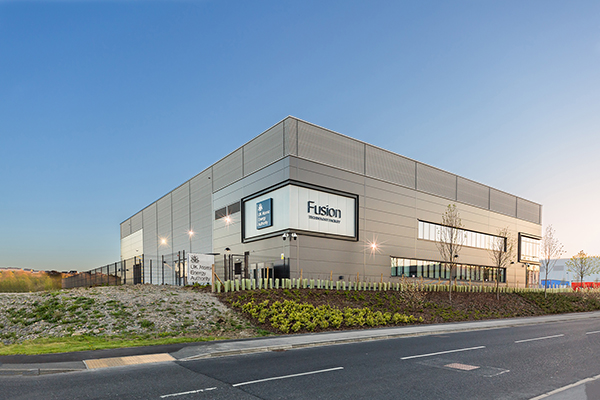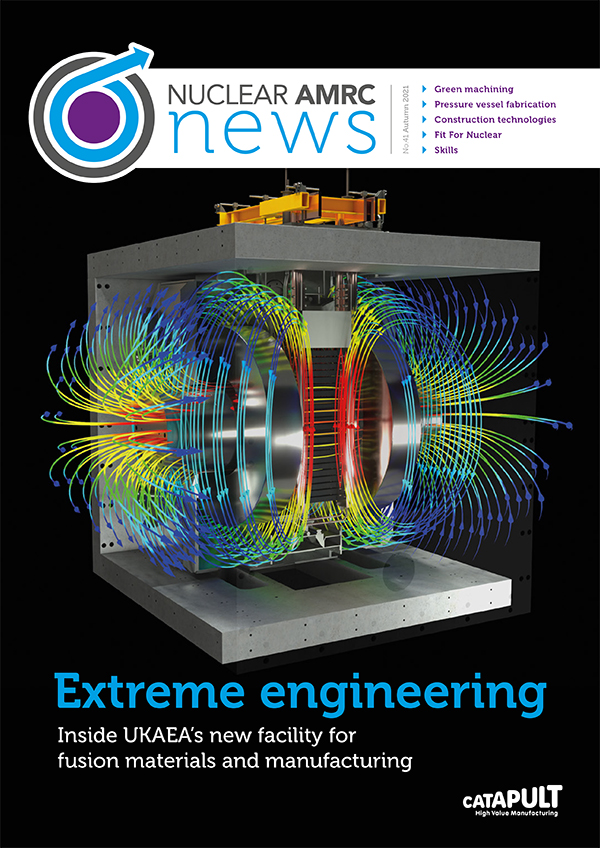Designing and building a commercially viable fusion power plant presents some extreme challenges for material engineering and manufacturing. As UKAEA starts work at its new Fusion Technology Facility, the Nuclear AMRC’s Professor Steve Jones considers how the researchers and the supply chain can best meet the needs of fusion reactor developers.

Based just up the road from the Nuclear AMRC on Rotherham’s Advanced Manufacturing Park, UKAEA’s new materials research facility will play a hugely important part in tackling some of the engineering challenges of creating the world’s first prototype fusion plant by 2040. UKAEA chose to come to South Yorkshire because of the region’s expertise in innovative manufacturing and applied research, and will work closely with local partners to achieve its mission.
From a manufacturing viewpoint, there are some major hurdles to overcome if fusion energy is to be realised within two decades. This will require the UK supply chain community to harmonise the expectations of targeted performance with a variety of advanced manufacturing technologies and methods at an acceptable cost.
To be commercially viable, fusion cannot be delivered at any cost. The research and manufacturing community needs to step up to the challenges we face in developing appropriate materials, manufacturing methods and construction sequences in a cost-effective manner.
We see and hear so much about designing for manufacture and designing for inspection, but we often fail to appreciate the challenges of the fusion system designers, who must design for performance and functionality. We need to achieve a suitable equilibrium between these two approaches, underpinned by an ALARP philosophy to achieve costs as low as reasonably practicable.
One key area is the need for new materials including advanced metallics, ceramics and cermets, and their processing routes – novel solid state fabrication methods such as hot isostatic pressing of metal powders and spark plasma sintering of a wide range of materials, as well as additive manufacturing through powder bed forming and hybrid direct energy deposition. In each case, we need to simultaneously consider their respective feedstock and processing consistency if we are to move forward to a fully mature manufacturing process.
Other areas we must address include the need to assess, in near real-time, the integrity and movement of structures during fabrication. The cost of unplanned rectification not only increases cost, but can degrade the performance of a product during service. This leads nicely to the need for appropriate equipment qualification and verification practices, as the use of surrogate or small-scale methods will only take us part of the way.
Developing manufacturing methods for fusion components, and testing and assessing their performance, should ideally be completed at full-scale, or at a minimum of two-thirds scale. This will not only increase our statistical confidence and improve our analytical techniques through the adoption of machine and deep-learning methods, it will also help us to assess and improve the duty cycles associated with these new manufacturing processes to improve the fidelity of the whole manufacturing cycle.
These are some of the prime manufacturing objectives that we are addressing at the Nuclear AMRC. Working in collaboration with UKAEA and other fusion developers – and alongside the University of Sheffield, our sister centres within the High Value Manufacturing Catapult, and our community of members and Fit For Nuclear companies – we will be gearing and spinning off those technologies and methods being developed for other safety-critical sectors, to help ensure that commercial fusion power stations can be built and operated as cost-effectively as possible.
 Download our latest newsletter (7MB pdf) for more on UKAEA’s new Fusion Technology Facility and the engineering challenges of fusion power.
Download our latest newsletter (7MB pdf) for more on UKAEA’s new Fusion Technology Facility and the engineering challenges of fusion power.



